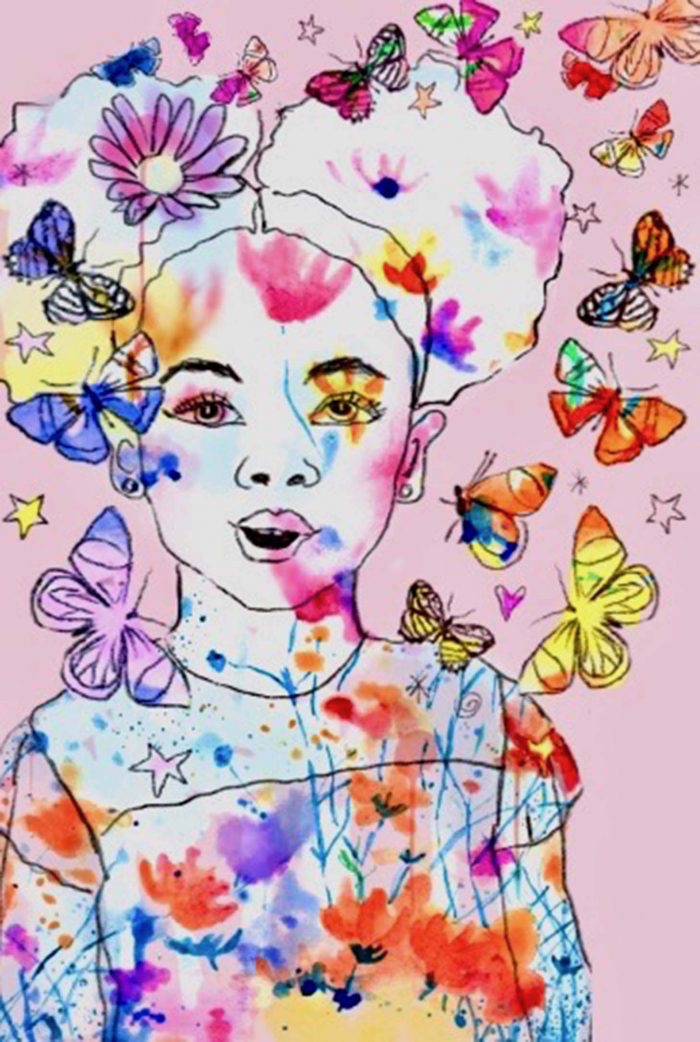New Year’s resolutions are still in full swing.
Maybe we’re planning to go on a dating site for the first time, learn a new language, or start exercising again. Unfortunately, too many of our worthy goals will be dumped on the dust pile of forgotten dreams by Valentine’s Day.
When many of us face the inevitable obstacles that arise when learning something new, we mutter, “You can’t teach an old dog new tricks,” and give up. This self-sabotaging belief not only feels like crap, but it also keeps us static, shutting down new opportunities to learn and grow.
But does our capacity to learn dwindle with age? Of course not. Plenty of people well past high school graduation have learned and accomplished all kinds of new things that have opened up their lives to amazing possibilities.
For instance, I earned my Bachelor of Arts in Visual Arts and a Master’s Degree in Art Education, and I started a new career as an art educator in my mid-40s after not making any art for over 20 years. Over those 20 years, I struggled to complete my degree and make art, but I couldn’t move past my fear of failure and my ego’s reluctance to look “bad” or feel frustrated during the first awkward stages of learning. I would encounter obstacles and put my dreams on hold over and over again. Finally, I found an undergraduate program that would let me design my own degree. It also gave me a way to earn life experience credit.
During my first semester and first sculpture class, I had a realization. It came while I was listening to my inner critic rant about my lack of expertise with sculpture and my 20-year failure to get a degree and become a “real artist.” Blah, blah, blah. Suddenly, I heard another voice interrupting my habitual negative self-talk. It said, “I don’t know anything about sculpture, and that’s okay. I’m just here to learn. So if I come in with an open mind and no expectations, I will definitely learn more about sculpture than I’ve known before.”
I suddenly felt calmer, lighter, and excited to learn. I didn’t know it then, but I had just heard a message of loving-kindness from my beginner’s mind. As Chopra.com describes it, ”The Zen Buddhist term, Shoshin, means ‘beginner’s mind,’ and holds that only when you are a true beginner, can you learn anything.”
My capacity to learn new things and meet my goals ignited the minute I started listening to my beginner’s mind. I earned my bachelor’s degree, graduated with honors with a master’s degree, and became a practicing certified teacher in just four years. Since then, I’ve taught students of all ages in schools, libraries, and community centers all over New York City, and I always endeavor to help my students cultivate their beginner’s minds. It enables us to enjoy the process of learning itself.
Through my personal journey, training, and teaching practice, I know we are fully capable of learning anything if we approach the process with humility, curiosity, and enthusiasm.
Here are three easy and creative exercises anyone can use to develop a beginner’s mind.
Get grounded with building blocks.
Whenever we learn something new, building a strong foundation is the first step to developing new skills. That’s why every early learning center has blocks. Young children learn by building with blocks. No matter how old we are, we can also learn many valuable lessons through the actual physical experience of building with three-dimensional objects. Here’s how:
Gather some rectangular blocks. If you don’t have any, try using small cardboard boxes like tea boxes. Try to build a variety of structures like a tower, an arch, and a pyramid with them on a flat, level surface. What happens? Do structures topple? Why? What adjustments can we make to keep structures stable? Is it the end of the world when the structures fall, or are we able to recover and keep going?
Reflect: How can we apply what we learned through our block explorations to our daily lives? How can we develop strong foundations, remain curious, overcome setbacks, and stay grounded as we reach for our goals?
Cultivate a childlike curiosity by exploring color.
Anyone who has ever spent any time with children can tell you they are non-stop learners driven by an endless sense of curiosity and wonder. Forever exploring and examining the world around them, they seem to have an endless stream of questions: Why is the sky blue? Why do the leaves change colors?
A child’s world is fresh, new, and full of amazement. Most of us lose that sense of beauty and awe before we even reach adulthood. But we can reclaim this sense of wonder by embracing new experiences with enthusiasm and excitement. Rather than focusing on our attachments to outcomes, we can concentrate, as young children do, on the act of learning itself.
One great way to do this is through the simple exercise of mixing our paint colors using only the primary colors: red, blue, and yellow. Everyone enjoys the alchemy of this exercise. Here’s how to begin:
Get some water-based paint like tempera or watercolor, a small brush, a water container, and a piece of white paper. Set up a small amount of yellow, blue, and red paints in three separate containers. Have a clean cloth or paper towels nearby. Put the water container within easy reach. Tape down the white paper to some newspaper. Top tip: Remember always to rinse the brush between colors and change the water frequently. Put a yellow dot on the paper, rinse your brush. Add a red dot to the yellow and swirl them together. What just happened? Try this process again using red plus blue and blue plus yellow. What happens? Add more of one color than the other? What happens then?
Observe the paints swirling in the water when rinsing the brush between colors. Make all kinds of marks with the new colors on the paper with the brush. Make more paintings, if possible. Hang up the paintings and observe them as they dry. Reflect: What do we learn when we let go of being perfect and develop our childlike curiosity and sense of awe?
Wake up to wonder with a “pocket treasure hunt.”
If you’ve ever emptied a little kid’s pockets when doing laundry, you’ve probably discovered one of their treasure troves: rocks, bottle caps, twigs, and pipe cleaners are the precious evidence of the way they observe their worlds with mindful attention.
Photographer Melissa Kaseman takes images of the weird and wonderful treasures her son puts in his pockets. Entitled “Preschool Pocket Treasures,” the series showcases a range of found objects that her son has gathered on his daily adventures. His little collections point to the fact that there is beauty all around us; we just have to be curious enough to look for it.
Like preschoolers, we can meet the world with our minds wide open and connect to the present moment. I often encourage my students to open up their artist eyes and look for the treasures around them—the art in the everyday. I often go for these walks when I need to recharge. A pocket treasure hunt is a simple way we can become more connected to our sense of awe and the beauty that is all around us. Plus, it’s fun and easy.
Go for a walk and look all around. Take time to examine spaces and places that we usually overlook, like around the bottoms of trees or underneath park benches. Gather little objects that catch the eye like stones and pieces of string. What kind of thoughts and feelings arise on this treasure hunt? Bring the objects home and arrange them on a white piece of paper. Take a photo, or draw them. Reflect on what happens when we slow down and encounter the world with our open-minded attention.
Trying out these three beginner’s mind exercises might make us feel silly or awkward at first, but that’s okay. Having the humility and open-mindedness to embrace new experiences with childlike enthusiasm is an essential part of the process.
Learning can be messy, embarrassing, and frustrating. When we relinquish our desire to appear perfect and right at all times, we allow ourselves to engage fully with the process and become more mindful of the ways we learn and grow. Cultivating our beginner’s mind helps us meet new learning challenges with a sense of open-minded wonder and enthusiasm and introduces us to a wonderland of possibilities.











Read 0 comments and reply